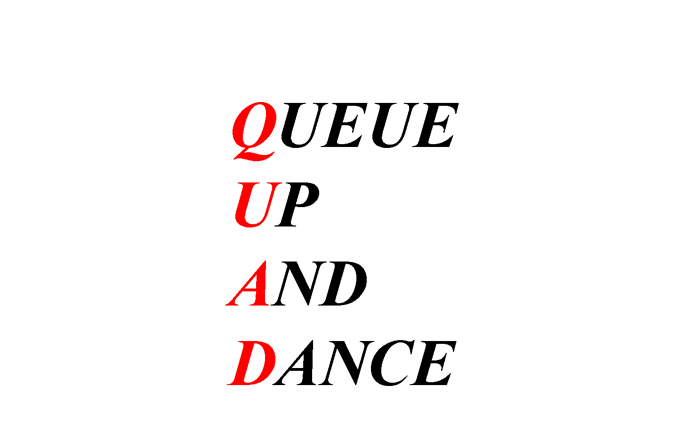
About
Queue Up And Dance celebrates legendary Bootle nightclub Quadrant Park, the UK’s first legal rave all-nighter. Although the club was short-lived, growing popular in early 1990 and closing at the end of 1991, it played a pivotal role in the evolution of club culture in the North West and beyond. Demolished in 1992, and with nothing at the site now hinting at its rich history, the story of Quadrant Park runs the risk of being lost.
The project invites those who went to Quadrant Park in its heyday,and young people living in Bootle today, to collaboratively develop an archive, exhibition and new creative projects inspired by the club’s history and the early DIY culture of rave.
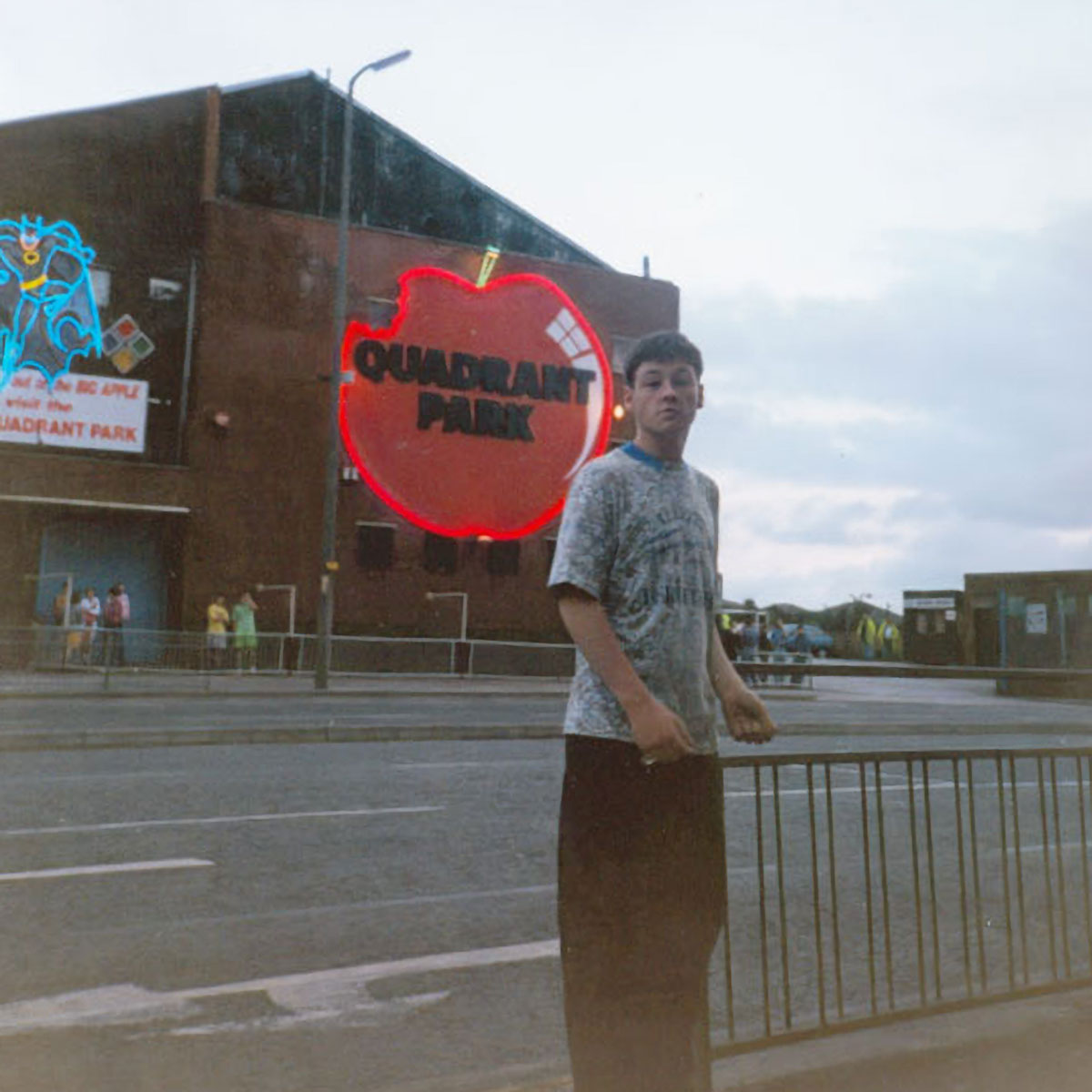
Kindly donated by Yvette Lewis
Queue Up And Dance is a collaboration between Sefton Libraries, Rule of Threes Arts and lead artists Dave Evans and Melissa Kains. It stems from conversations between Dave and the original Quadrant Park DJs, Mike Knowler and Andy Carroll, and the vibrant online Quadrant Park Reunions community on Facebook.
Queue Up And Dance is being funded by Historic England’s Everyday Heritage grant programme, celebrating working-class histories. Made possible with The National Lottery Heritage Fund, with thanks to National Lottery players.
Archive
The aim of Queue Up And Dance is to celebrate the importance of Quadrant Park during its later years, between 1990 and 91.
Throughout 2024 – 2025, we invited those who went to Quadrant Park in its heyday, and young people living in Bootle today, to collaboratively develop an archive.
We met with people local to Bootle and those who travelled to the Quad from all over the country, receiving photographs, flyers, posters and other ephemera. We interviewed those who contributed to the archive, chronicling what was so important about Quadrant Park and the influence it had on the people who went.

Kindly Donated by Tony Healey
To celebrate the 35th anniversary of Quadrant Park, we collaborated with Quadrant Park Reunions to bring the party Back to Bootle, hosting an exhibition at Salt & Tar alongside the reunion party in Bootle for the first time since the venue closed.
Bringing together displays of archival material and a timeline of how the style, graphic design and music developed in Quadrant Park’s short lifespan, visitors were invited to find themselves in the crowd in the photographs, learn about this explosive moment in the development of club culture and celebrate Quadrant Park together.
Not an attempt to create an official or complete story of Quadrant Park, as the club was different things to different people, it captures this brief and vital cultural moment through the myriad memories of those who went. This lasting archive of material will be available for future generations via Sefton Libraries.
Click below to see the collection of everything we gathered over the past year!
Do you have a Quad story to tell? Or a flyer in a drawer somewhere? We’d love to hear from you. This is a living archive that will continue to grow. If you’ve got memorabilia or photographs to share, please email joe.goff@sefton.gov.uk.
Workshops
Young People’s QUAD Workshops
Young people aged 16-24 have, for the past year, taken part in music production and DJ skills workshops with Melissa Kains: DJ, producer and founder of female and non-binary DJ collective Sisu Crew.
Over summer 2024 Melissa led a series of workshops looking at different sides of DIY club culture including graphic design, interviewing skills and DJing. Young people learned to beat match, use vinyl and digital mixers, as well as using some of the original Quadrant Park flyers to design their own material using the Risograph machine.
At the start of 2025, we partnered with Scrapyard Studios CIC for a 6 week course where another group of 16-24 year olds learned digital music production skills at Scrapyard. Melissa taught everyone how to use a midi keyboard, use different digital software for creating tracks and how to use vocal samples.
Work with Hugh Baird Students
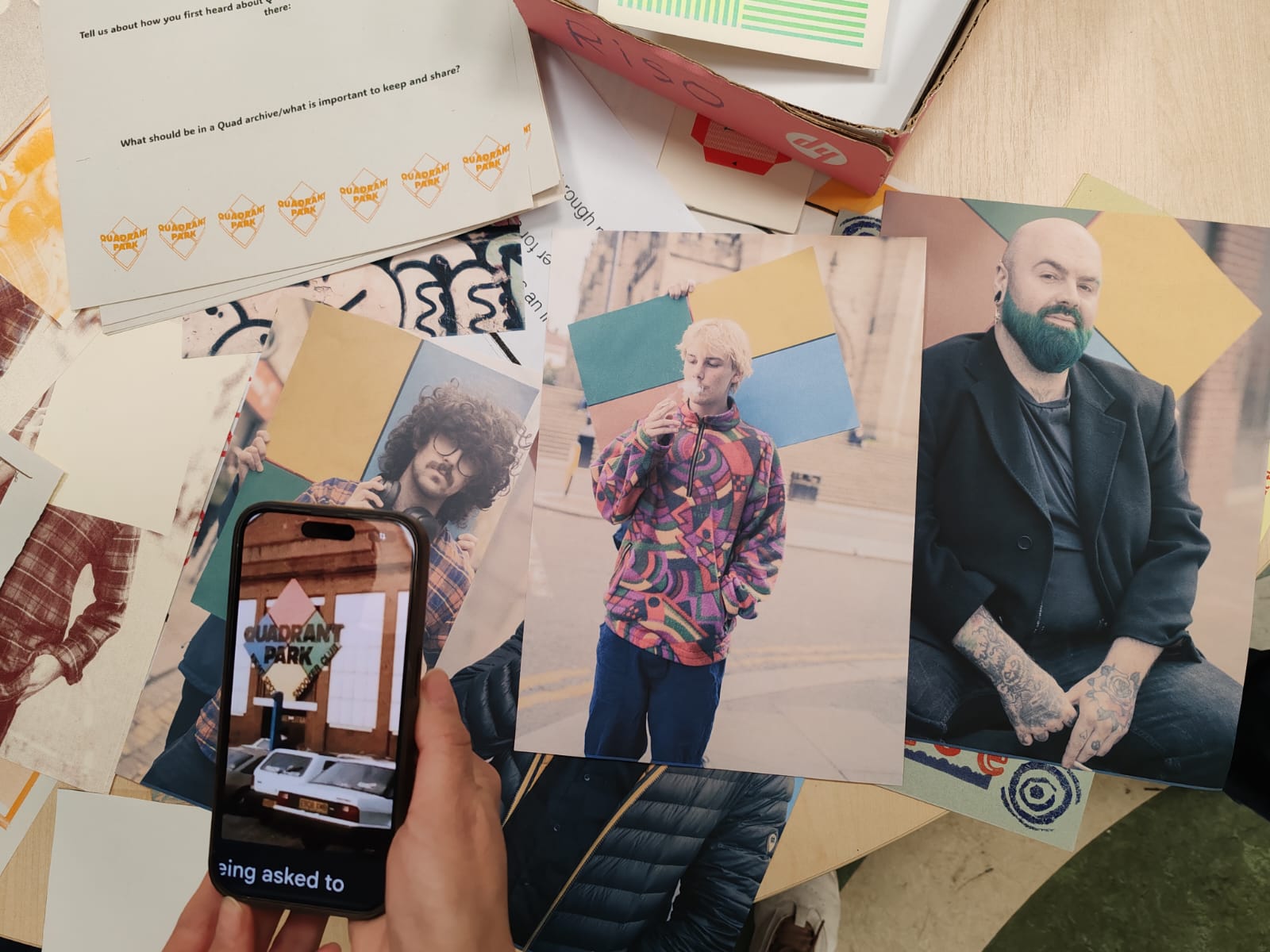 Risograph workshop at Crosby Library led by designer Mark Simmonds. Work by Nina Karetska.
Risograph workshop at Crosby Library led by designer Mark Simmonds. Work by Nina Karetska.
As part of a live project module, Hugh Baird college partnered with Sefton Libraries and At The Library to deliver a creative brief responding to the legacy of Quadrant Park. Whilst some students were interested in the design, fashion and photography styles of the era, others were keen to explore the changing nature of rave culture and even the environments in which they have taken place.
We also hosted an open Riso session for graphics and photography students to experiment with the print process, supported by artist Mark Simmonds, a technique which closely mimics the style of the original Quadrant Park flyers.
The students have taken a wide-range of creative approaches to this project, as a means to engage with the local heritage of Quadrant Park and examine the changing nature of DIY and youth-led culture in the city today.
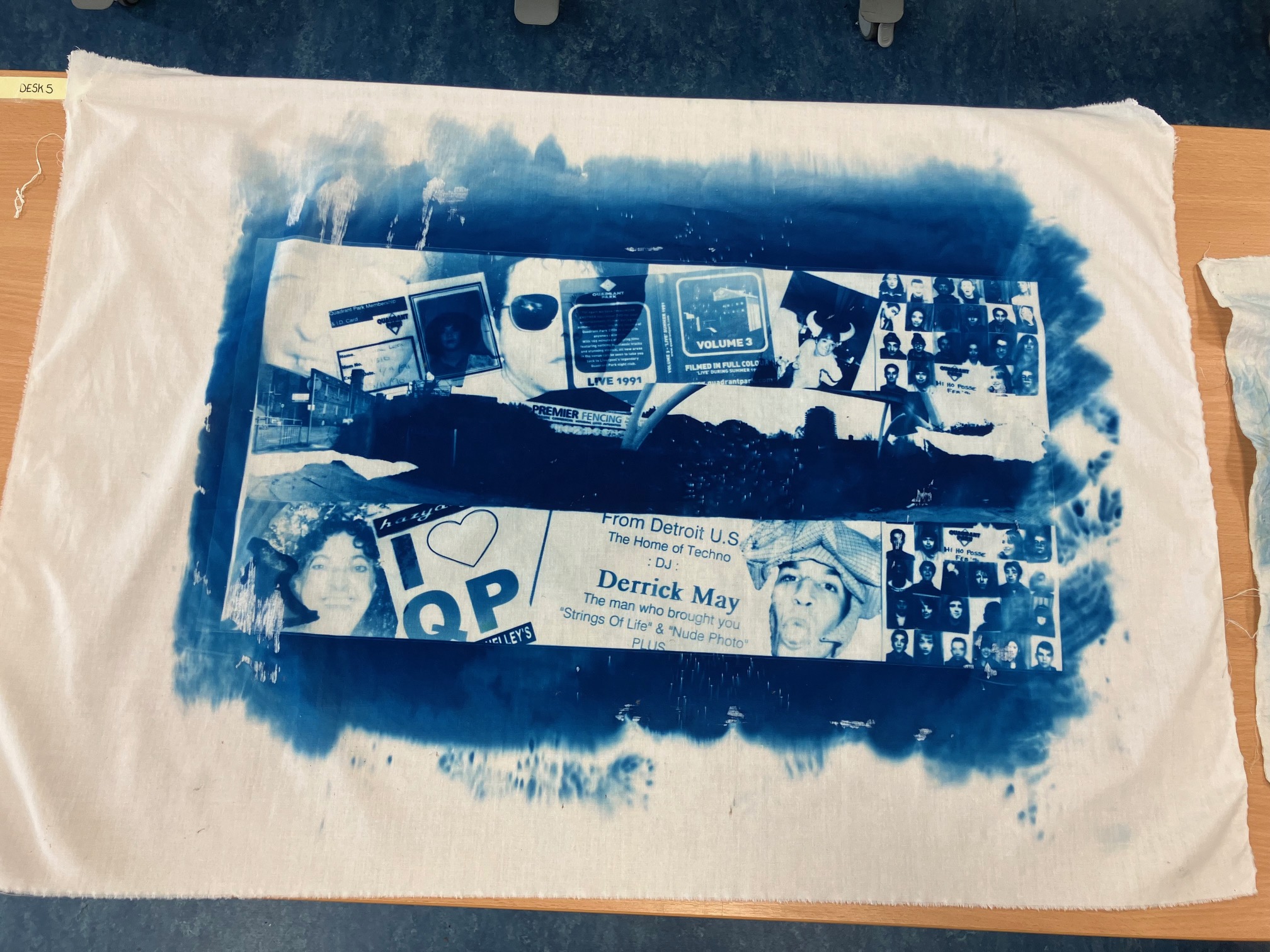 Cyanotype using archival materials by Jodie McIntosh
Cyanotype using archival materials by Jodie McIntosh
All the work created as part of this project is now also included in our archive. You can see it all and find out more about the artists here.
Queue Up And Dance celebrates legendary Bootle nightclub Quadrant Park, the UK’s first legal all-night rave. Although the club was short-lived, growing popular in early 1990 and closing at the end of 1991, it played a pivotal role in the evolution of club culture in the North West and beyond.
Queue Up And Dance is being funded by the Historic England Everyday Heritage grant programme, celebrating working class histories. Made possible with National Lottery Heritage Fund, with thanks to National Lottery players.
Q.U.A.D Book
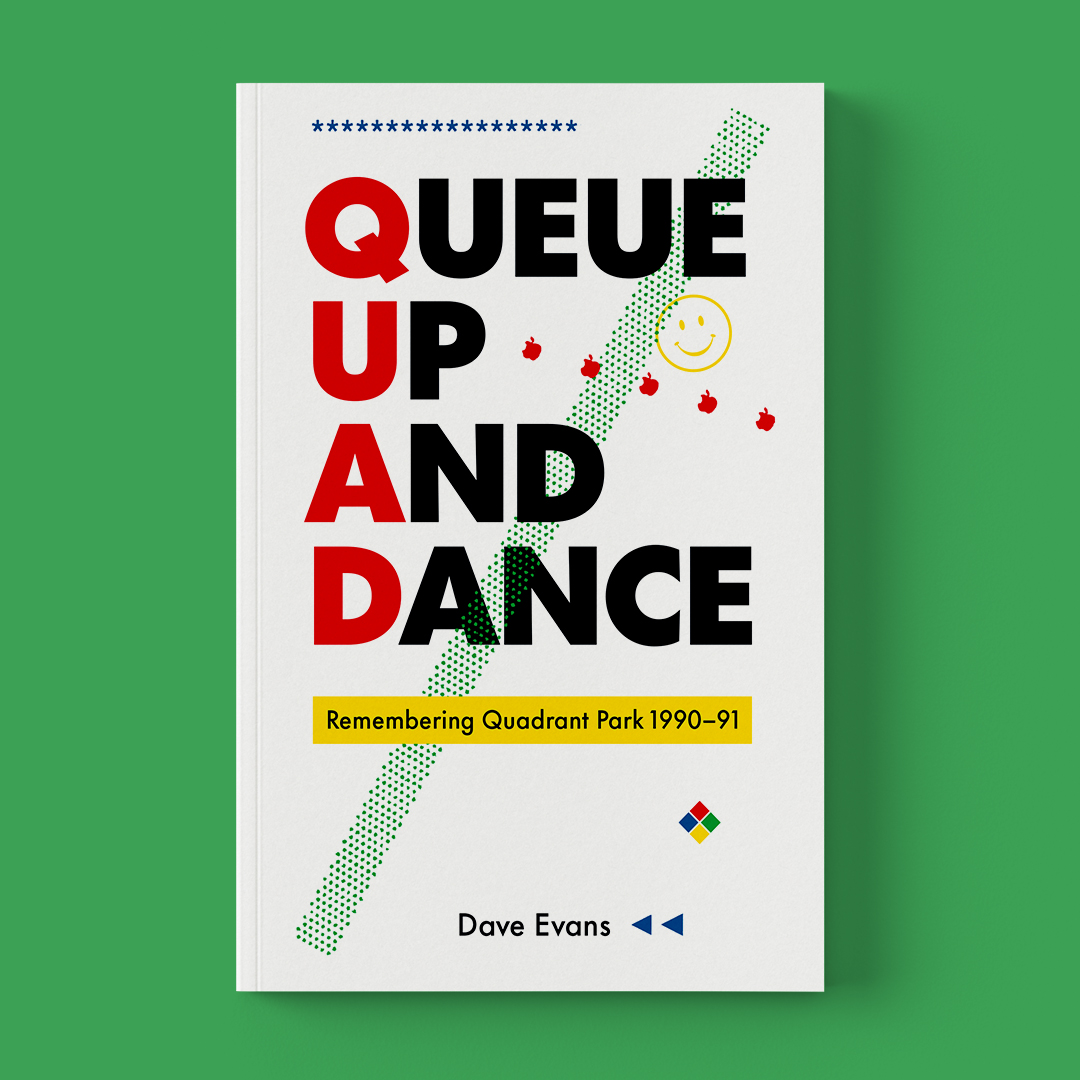
Thanks
Queue Up And Dance is being funded by the Historic England Everyday Heritage grant programme, celebrating working class histories. Made possible with Heritage Fund UK, with thanks to National Lottery Players.
Thank you to UK Shared Prosperity Fund who provided funding for laptops and software for the workshops with Scrapyard Studios.
Thank you to original Quadrant Park DJs Mike Knowler, Andy Carroll and John Kelly for their collaboration for the 35th anniversary and the invaluable conversations that guided some of our investigations and interviews with ex-Quad heads.
Huge thanks to the young people who volunteered to interview family members who used to go to the Quad, helped to upload material to the archive, took part in workshops and volunteered their time to support other elements of the project. It was a pleasure to see the project span generations in exactly the way we hoped it would.
And lastly, thank you to the online Quadrant Park Reunions community on Facebook without which this project would absolutely not have been possible. Though the building itself no longer exists, nor did a formal archive until now, there exists this community in the thousands who would have always made sure nobody ever forgot Quadrant Park.

